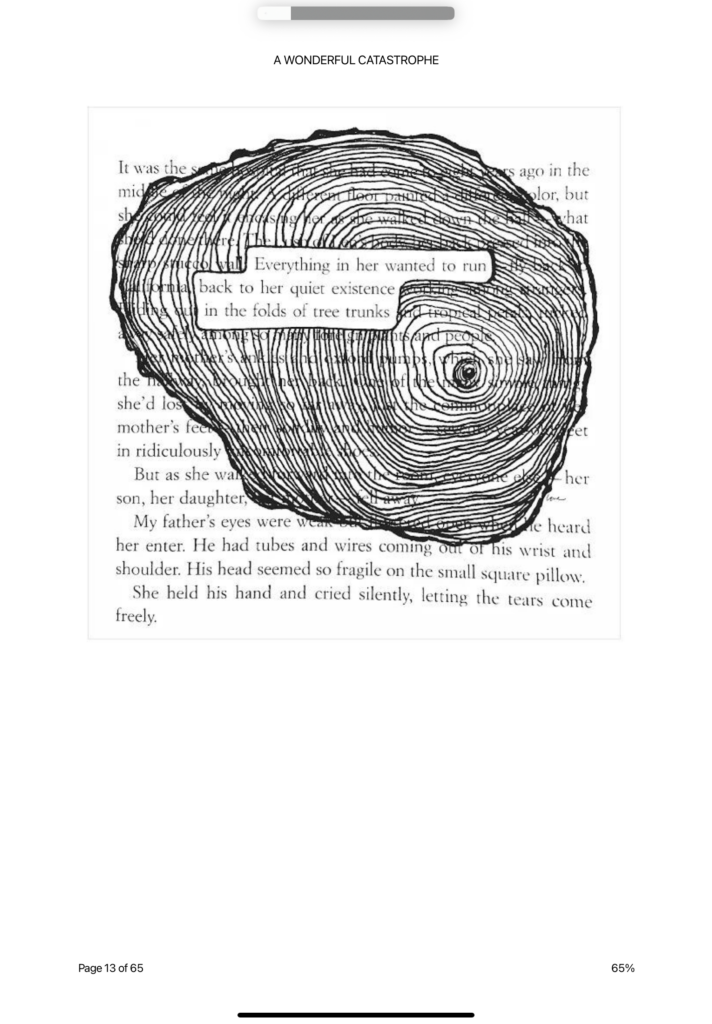shovel: 20 minutes
slushy, icy, thick snow
33 degrees
Yuck! It’s an awful mess out there on the sidewalk, the roads. After he got back from his walk I asked FWA if it was, a. doable and b. worth it to go out and shovel. He said yes to both, so I did, but now I’m wiped out and sore and not sure if it was either of those things. Looking out my window right now at the street, I am disheartened. One big soupy, slushy mess. Will more of it melt and be cleared out before it freezes again? I hope so.
A quick note about my ankle: crisis averted! The RICEing (both resting icing compressing and elevating AND playing around with acronym) must have helped. My ankle feels fine today!
Sara from 4 jan 2026 asked me to let her know if anything big and terrible happened today. Not yet (as of 4:49 pm), but there’s a lot of talk about invading Greenland and I keep seeing the headline, The Danish PM says a US invasion of Greenland will mean the end of NATO.
In other shitty news: I noticed, while clearing trying to clear the deck that a wide stretch of snow under our crab apple tree has been turned into a port-a-potty by the two rabbits who visit every night to feast on fallen apples. Very gross! Some scat here, some scat there, scat scat everywhere. The snow is glowing brown — I’ll have to try and get a picture of it, because my words can’t quite convey the color or the grossness — a picture probably can’t either.
update: I pointed out the tree/rabbit/shit situation to Scott and we agreed it wasn’t all rabbit scat and it wasn’t glowing brown. A lot of it was discarded apple bits from birds or squirrels or the bunnies and the snow beneath the tree’s wide canopy was glowing a faint orange, not brown.
swim: 1.75 loops
123 laps / 55 minutes
ywca pool
Decided to swim without stopping until Scott showed up at the end of my lane. I was hoping to go longer — distance and time. Maybe that can be next week’s goal: to get to 140 laps, which is 2 miles. I’d like to do it in 1 hour. It felt great to be swimming again.
shadows: the afternoon light coming in the window created lots of shadows on the pool floor. Today I decided that it looked less like the floor was dancing and more like it was crawling. As I swam, I suddenly thought of the line from Raiders of the Lost Ark: why does the floor move? Other memorable shadows: the lane lines on the shallow floor, then the lane lines casting a shadow at the far end, all the way up the wall, from the deep bottom to the top. Such a cool image. I liked admiring it every time I neared the far wall.
10 Pool Friends
- the yellow! grout between the bright blue tiles on the pool floor in the middle of each lane — I never noticed it was yellow and not white — is it, or was it just dirty?
- the bright blue tiles marking a cross at the end of each lane — usually I read them as black or dark navy
- some crud on a tile beneath me
- a small red chunk of something that started on the pool floor a lane over, near the spot where it slopes down, then slowly shifted down each lap — tile after tile — until it made it to the bottom and then under me in my lane — I was fascinated by this red thing and enjoyed tracking it — I prefer not knowing what it is/was
- a guy in black swim trunks 2 lanes over that I raced (in my head) and beat
- someone in fins one lane over
- the silver trail of bubbles that the swimmers’ fins made as they kicked
- a lifeguard in a BRIGHT yellow jacket
- a swimmer in green swimming on their back, doing some sort of reverse breaststroke
- a swimmer in red doing freestyle then sidestroke then walking then kicking with a kickboard
Halfway through, I swam breathing every 5 strokes and tried to think one word each time I surfaced to breathe: 1 2 3 4 5 light 1 2 3 4 5 tile 1 2 3 4 5 window 1 2 3 4 5 door 1 2 3 4 5 tree — Nothing that interesting . . . yet . . . I’ll have to keep working at it, see if I can open myself up to more words. The bigger challenge: can I remember them? Nearing the end of the swim I was getting into a groove and thinking about how swimming for almost an hour without stopping is good practice for longer runs/marathon training. I was also thinking — okay, now the fun starts — as in, I’ve swum enough today to get into a flow state, what could happen if I kept going? What doors might open for me? What wonderfully strange ideas could I have? What delightfully tiny poems could I craft? I didn’t get to find out because Scott arrived and my swim was over, which was fine for today. I’d like to experiment with this longer swim this winter, see what I can do with it.
Little House Update
A few days ago, we made it to season 3 of Little House on the Prairie. We both knew something had shifted in the wrong direction when we heard the opening theme song: season 2’s funky 70s bass line had been replaced with a cheesy swing.
The first episode guest-starred Johnny Cash and June Carter Cash. It was enjoyable, but had lost some of the dark edge of realism that we enjoyed in seasons 1 and 2. Episode 2 was the beginning of evil Nellie, which is camp-tastically awesome, but lacks a grounding in a real time and place. It was exaggerated and over-dramatic, shifting the story away from the lives of people trying to not die in the unforgiving frontier of the 1870s, to an epic battle between the flawed and feisty goodness of Laura and the pure, irredeemable evil of Nellie Oleson. Nellie and her twisted, unhinged glare. Nellie silent and still, lurking at the window. Nellie and her old-fashioned temper tantrums, one on the bed, wailing and squealing and pounding her fists into her pillow; another pacing the room, shrieking and breaking porcelain dolls on the wall, smashing an expensive dollhouse with a hammer on the floor. I do find Nellie’s antics to be entertaining, and get some pleasure in loathing Mrs. Oleson, but I miss the quieter, darker depictions of the difficult frontier life that we witnessed in seasons 1 and 2.
After Little House we’ve been watching an episode of Love Boat from season 1. We’re enjoying it. Such a contrast to Little House. It makes me want to watch the whole line-up from a 70s evening.* I’ll have to ask Scott what that would be; as a kid he memorized the tv guide and probably remembers exactly what was on and when. That would be a fun and enlightening project, to revisit the 70s values/perspectives/preoccupations represented in prime-time tv that we were both raised on.
*perhaps the more accurate recreating of our early kid viewing experience of these shows would be to figure out the reruns that ran back-to-back on TBS.
Wow, this entry went on a ramble! Before ending it, I’ll just add that I have been shocked by how relevant the themes in Little House are right now. Yes, I have problems with the show — too much God-talk and not enough discussion of what it means to live on stolen land less than 2 decades after the civil war — but the hope and resistance and the desire for social justice of the 70s shapes these stories in ways that I had forgotten ever existed (because: Reagan). I am resisting the urge to devote an hour or more to offering specific examples of what I mean here. I don’t have time today.




